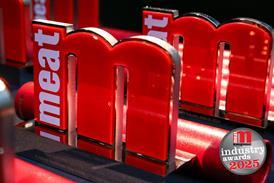Forestry and Land Scotland (FLS) has underlined its commitment to deer management in Perthshire with a new larder that can handle up to 1,500 carcasses per year.

The FLS stated that the larder will provide modern and efficient premises where venison progresses into the human food chain from the point at which the deer was culled. The new facility will handle around 900 carcasses every year but can deal with up to 1,500.
Deer numbers across Scotland, according to FLS, are now estimated to be around 1 million and an assessment by the Independent Deer Working Group recently highlighted the need for proactive deer management.
As one of many organisations tasked with keeping deer numbers to a sustainable level, FLS culls in the region of 40,000 animals every year, providing almost 1,000 tonnes of wild Scottish venison. When processed into venison products by Highland Game Ltd, this is distributed to national, UK and international markets.
The new larder is part of a programme of rationalisation of all FLS’ venison handling facilities. As the largest producer of venison in the UK, Scotland contributes around 3,500 tonnes of wild venison and 70 tonnes of farmed venison each year. Around two thirds of this enters the £100 million UK game market, with the remaining third being exported to countries across mainland Europe and, increasingly, the USA.
Evidence of continued damage to restock sites and natural regeneration, FLS stated, indicates that enhanced cull levels will be required in years to come. It is estimated by the FLS that the new larder will be expected to deal with future cull levels of around 1,400-1,500 carcasses annually - predominantly red deer with some roe deer and the occasional Sika or fallow deer.
"Increasing and unsustainable pressure"
Ian Fergusson, FLS’ head of wildlife management said that increasing deer numbers were putting "increasing and unsustainable pressure" on the habitats that they browse and graze, presenting a challenge to Scotland's contribution to mitigating the climate emergency.
Fergusson went on to say that today’s larders would need three times the capacity of those made 20 years ago to ensure culling continues at the appropriate level to keep deer numbers at a “sustainable level.”
He continued: “That illustrates the nature of the deer population issue now – and we anticipate that the issue of sustainability is going to take some time to achieve. It’s also something that will require close partnership and collaborative working with all land managers.”
“Investment for future demand is essential”
Dick Playfair, secretary of the Scottish Venison Association, said that the deer cull is an important aspect in helping to address the climate change crisis as it “protects our trees and our natural environment.”
He said the deer cull "also provides a source of excellent, healthy protein – venison is one of the healthiest red meats available. Investment in making sure that that supply is safe and can meet the capability for future demand is essential and it is good to see Scotland’s largest venison producer rising to that challenge.”
This story was originally published on a previous version of the Meat Management website and so there may be some missing images and formatting issues.















